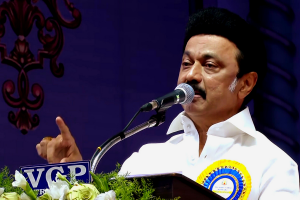The Supreme Court has taken the sting out of sedition for practicing journalists. There have been several calls to scrap the colonial-era sedition laws. Ruling that criticism of the government even in strong words does not constitute sedition, a Bench of the Supreme Court led by JJustice UU Lalit upheld the right of every journalist to criticise, even brutally, measures of the government with a view to improving or altering them through legal means.
Quashing a sedition case against Vinod Dua, a senior journalist and Padma Shri awardee, filed by a BJP leader in Himachal Pradesh and defended by the State government, for his criticism of the Prime Minister and the Union government for the mishandling of the migrant crisis during the first wave of the Covid-19 pandemic, the court ruled that “every journalist is entitled to protection under the Kedar Nath Singh judgment.”
Advertisement
In the Kedar Nath Singh verdict of 1962, the court had mitigated Section 124A of the Indian Penal Code by ruling that it can be used only when someone’s word had actually led to violence or generated an inclination for violence. The ruling will come as a relief to several journalists across the country facing sedition cases. Section 124A describes sedition as punishable with imprisonment from three years to life, a fine or both.
Among journalists facing such cases is Siddique Kappan based in Kerala. He was arrested by the Uttar Pradesh police while on his way to Hathras to cover a rape case last year and had been denied bail till date. Kappan and 21 other journalists covering the Hathras rape case have been charged under Section 124A.
A string of prominent journalists was charged under the sedition law for their coverage of the farmers’ tractor rally in Delhi on Republic Day. The Supreme Court stayed the arrest of all of them. The Constitution has varying criteria for permissible restrictions on freedom of speech and expression and draws a boundary between serious and aggravated forms of public disorder which are calculated to endanger the security of the State and the relatively minor breaches of the peace of purely local significance.
“Only a higher degree of threat pertaining to endangerment of the foundations of the State could justify curtailment of the rights to freedom of speech and expression,” observed the Supreme Court in its 1950 judgment on Romesh Thapar v State of Madras. Thappar was editing a weekly journal called Cross Roads which was constantly at loggerheads with the Congress government of the day. This 71-year-old judgment should have put to rest all doubts about sedition, but it continues to haunt even today.
When the Indian Penal Code was enacted in 1860, the sedition law was not included. It took another 10 years for Section 124A to be included. When Mahatma Gandhi was tried under this law in 1922, he told the court it was designed to suppress the liberty of the citizen. Even though the Law Commission of India issued a directive in 2018 that for expression of a thought not in consonance with the government’s policy one should not be charged under sedition, the law is being used more flagrantly. The time to scrap this law is long overdue.











